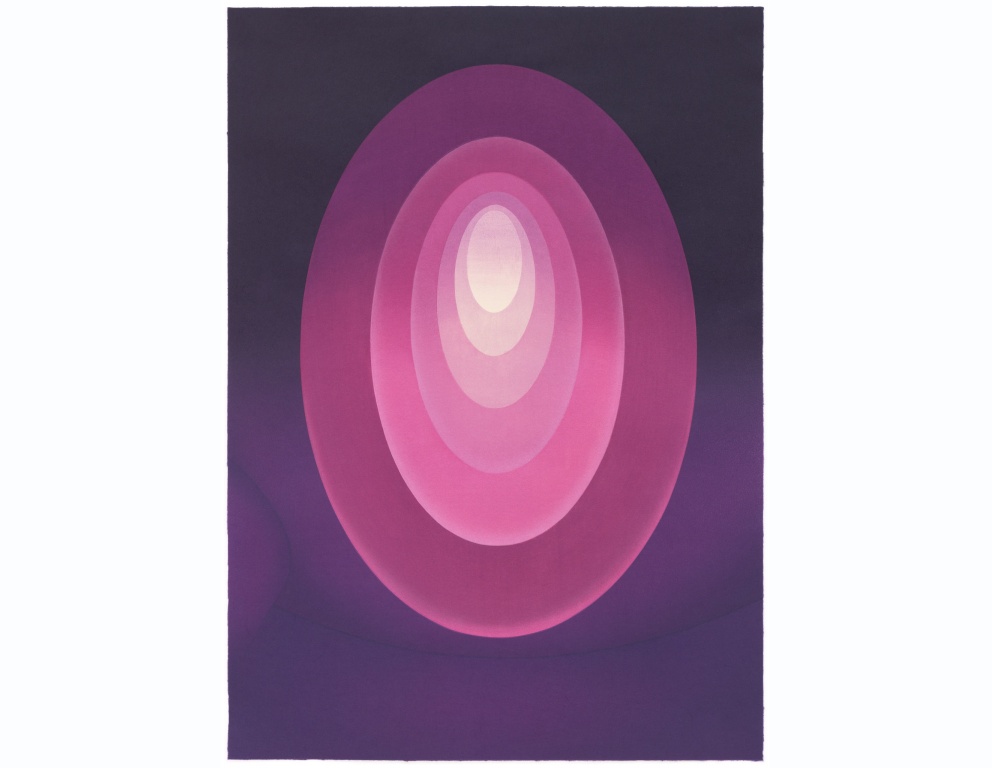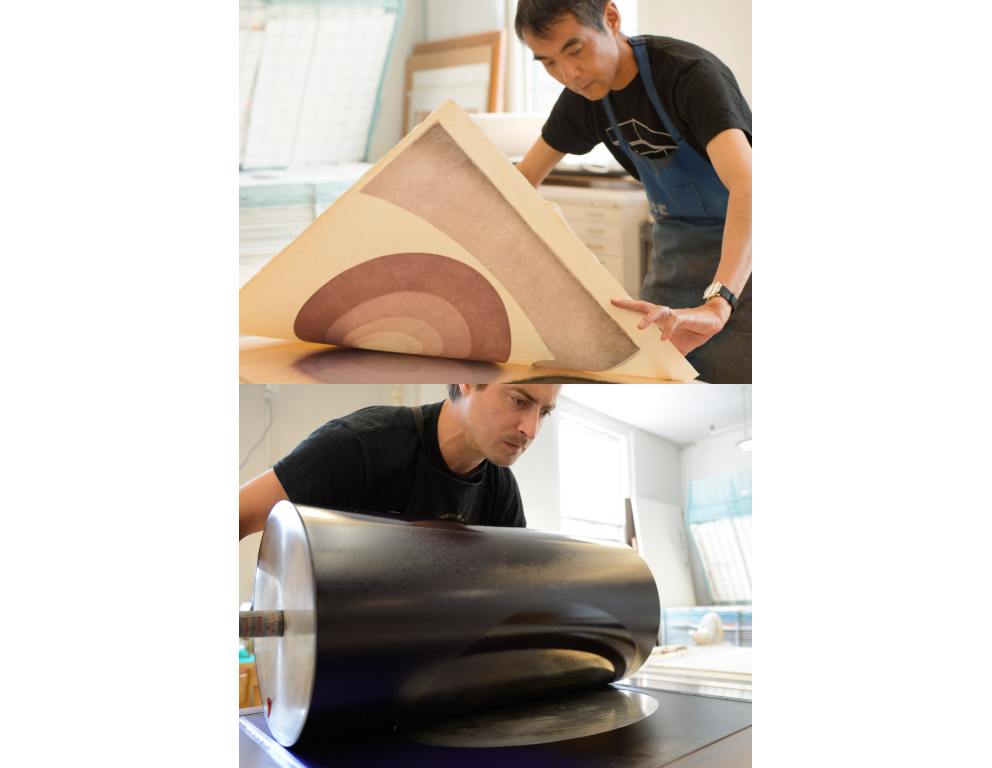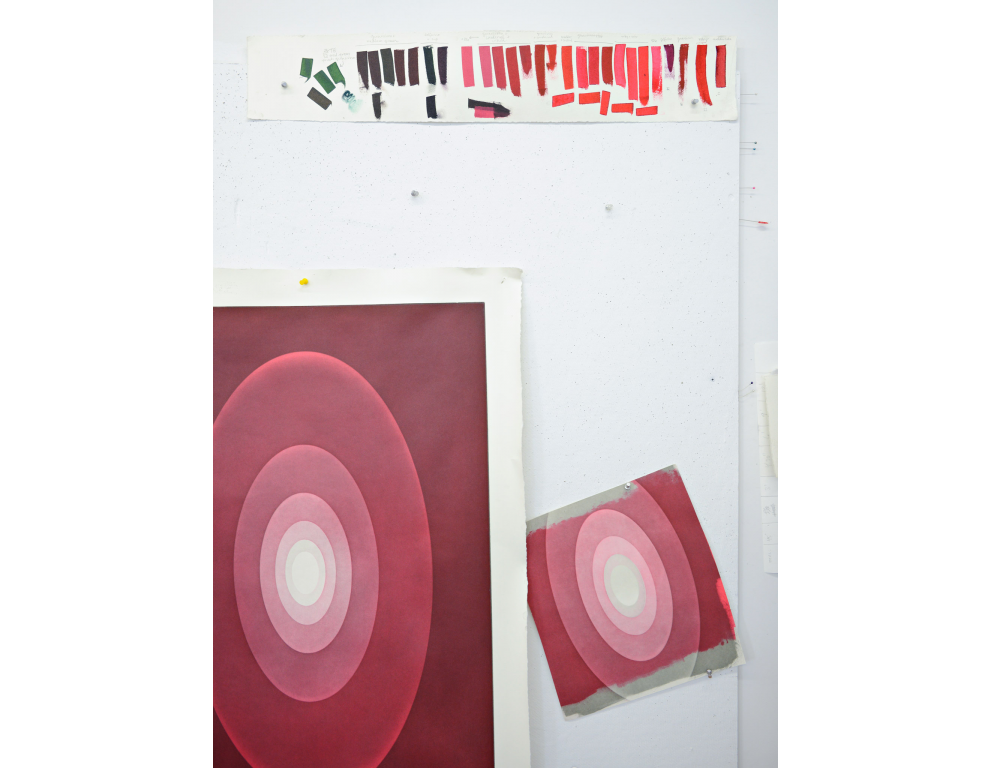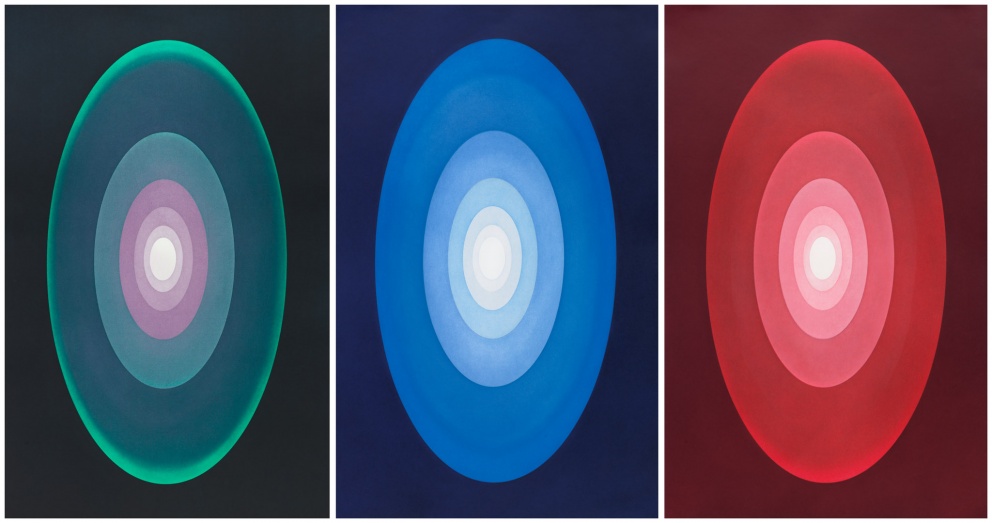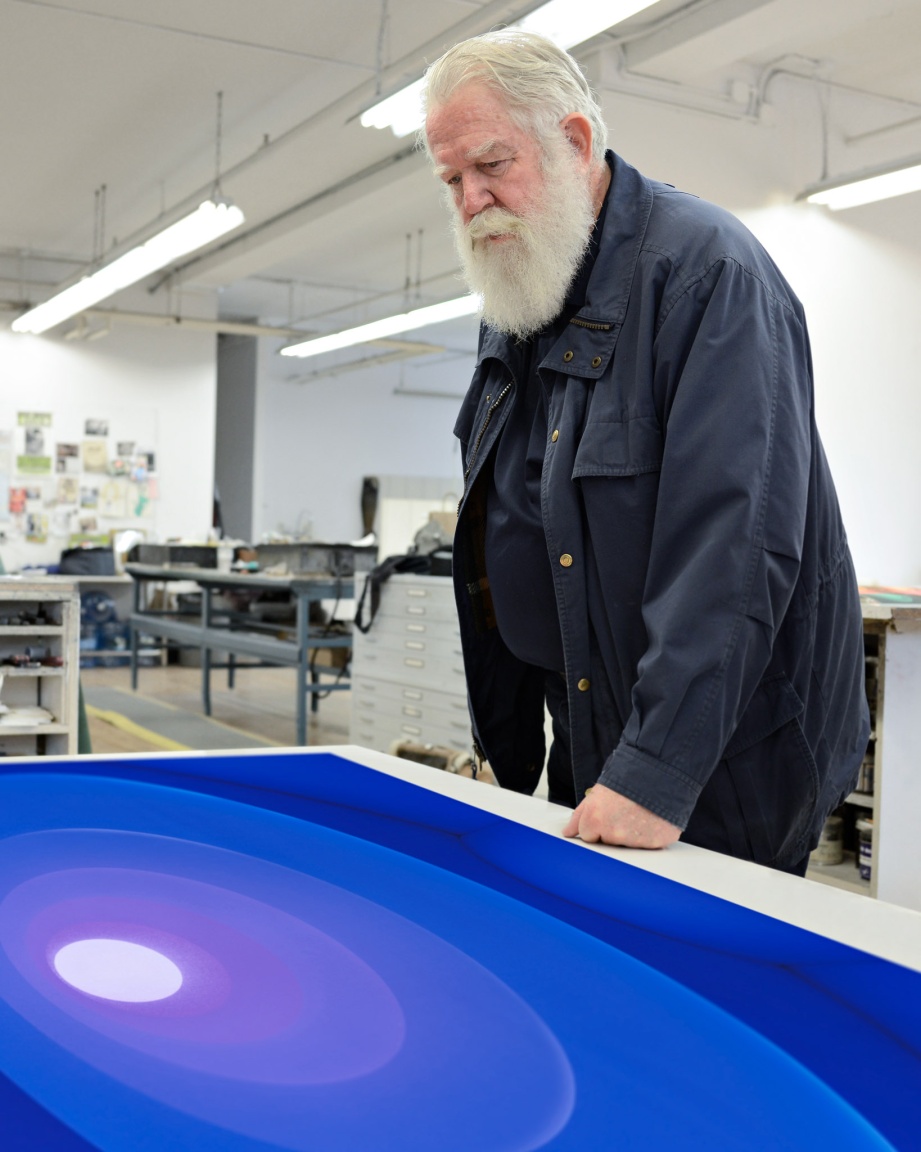-
I make spaces that apprehend light for our perception, and in some ways gather it, or seem to hold it…my work is more about your seeing than it is about my seeing, although it is a product of my seeing.1
James Turrell’s work centers on the manipulation of light, from projections and sensory deprivation to color fields and site-specific interventions. Turrell encourages the viewer to become aware of the function of our own senses, and experience light as a tangible element.
-
Turrell’s 2013 installation Aten Reign at the Solomon R. Guggenheim Museum in New York transformed Frank Lloyd Wright’s iconic rotunda; reimagining it as what the artist called an "architecture of space created with light." Turrell’s man-made sky became part celestial phenomenon, part group meditation for the viewers who gathered below it.
Beginning that year, James Turrell collaborated with Pace Prints’ master intaglio, woodcut and digital printmakers to distill the experience of Aten Reign in a series of prints. With the challenge of translating Turrell’s mastery of living light to printed ink, the printers went to the limits of their craft and beyond.
-
"From Aten Reign" (2015)
Aten Reign, which refers to the force of the sun in ancient Egyptian religion, was the largest temporary installation the artist or the museum had ever taken on. Viewers experienced the pure perception of light over an hour-long cycle, during which the empty rotunda was bathed in a continuously shifting spectrum of color.
-
Although it uses natural light, “Aten Reign” is a more thoroughly artificial skyscape. Spend time watching its fluctuations and you may or may not see God, but you will probably come away with both an enhanced sense of your visual powers and also a new humbleness concerning the world’s visual complexities. As the colors shift, spread and drain, as the tiers seem (but only seem) to alternate between concave and convex or change in width and depth, as you struggle to catch every nuance, you realize how much more there is to perceive than you normally do.2
-
-
“In the installation, the colors were both transparent and intense at the same time. There were many gradients, so I used the Bokashi technique of blending two colors on the same block and repeated that in layers.
As I proofed the blocks, each layer changed the color of the one beneath it, so that I had to remix the inks and start again. Each of the prints required its own blocks—they couldn’t be reused, as the colors from one print would mix with the next. Each color variation was its own challenge; each print took a lot of trial and error.”
-Master Printer Yasu Shibata
-
The key objective of the printers was to depict the light on paper, as if it were emanating directly from a light source. Master printers Yasu Shibata and Justin Israels contrasted an oil-based background with water-based ink in the concentric ovals, resulting in a vibrating light that is typical of Turrell’s work and nearly impossible to capture photographically. The ovals are hand-carved and printed in shades of blue, green and red. An oversized roller was used to create the background gradients. Each image was realized using 14 colors, 12 woodblocks and one metal plate.
-
-
“It was up to us as printers how to produce with ink and paper something that is very intangible: light and color.”
-Master Printer Bill Hall
-
-
-
-
Footnotes
1. I make spaces that apprehend light for our perception... jamesturrell.com
2. Although it uses natural light, “Aten Reign” is a more thoroughly artificial skyscape... Roberta Smith in The New York Times (June 20, 2013)
All works of art © James Turrell
Video and audio interviews recorded in 2014 © Pace Editions.
